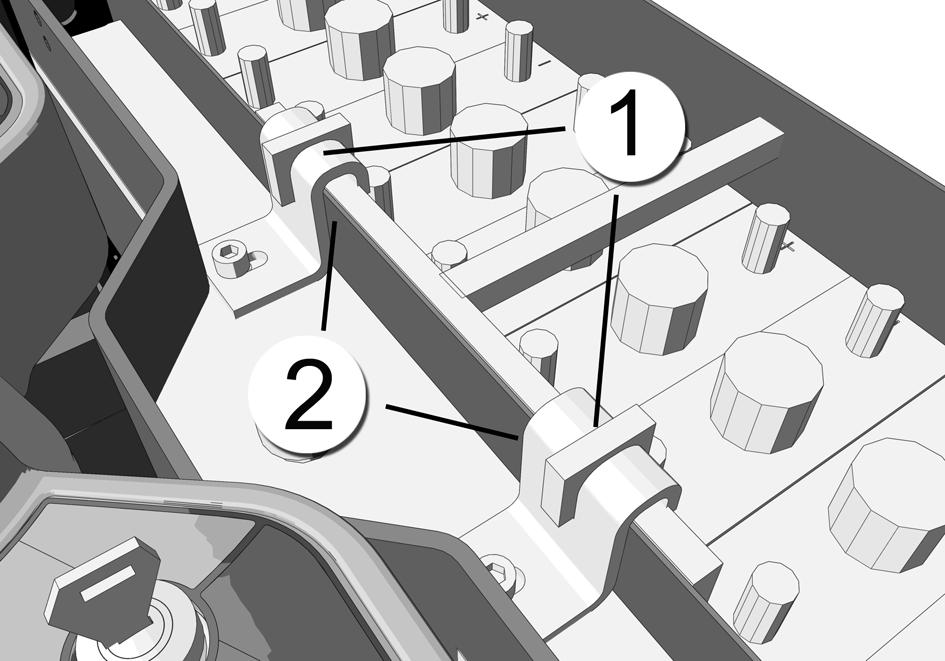
3 minute read
Batteries
• Raise the load so that it is clearly above the stacking height or shelf level. Note the height of the upper horizontal beam of the shelf. • Pull in the mast and reverse from the stacking location so that the load can be freely lowered. After lowering the forks, tilt them upwards.
NOTE
Tilt and reach functions are available in reach trucks only.
Collecting (order picker trucks)
• Use the lifting and lowering lever to set a suitable collecting height. • Place the load so that its weight is distributed evenly on the forks.
WARNING!
Observe extreme caution when collecting items.
Handling of broken pallets
WARNING!
A broken pallet or an unstable load must never be left on a shelf or stack, but must always be removed.
7. Batteries
Only appointed and trained personnel may replace and recharge batteries. Individuals maintaining batteries must have sufficient protective clothing and eye gear.
• Do not handle naked flame in the vicinity of batteries because of a risk of explosion. • Do not smoke when working with batteries. • Do not leave tools or other metal implements on top of the battery. Sparking or a short-circuit may cause the battery to explode. • When batteries are recharged, the cell plugs must be closed firmly to prevent splashing of battery fluid. • Battery fluid is a corrosive acid solution; avoid getting it on the skin or in the eyes. Battery fluid develops an explosive gas at the end phase of recharging. Therefore, make sure that the battery has sufficient ventilation (this does not apply to maintenance-free batteries). • Always perform a complete battery charging, as repeated partial charging may reduce the battery life.
Furthermore, a low battery charge status may damage the battery during long-time use.
Recharging the battery
Make sure that the charger is the appropriate model and that the battery has sufficient ventilation.
1. Park the truck in a reserved recharging place. 2. Switch off the power from the key switch. 3. Make sure that the charger has been switched off. 4. Disconnect the battery connector and connect it to the charger. 5. Switch on the charger.
After recharging
1. Switch off the charger. 2. Disconnect the battery connector from the charger. Grab the plugs; do not pull the cables. 3. Check the battery according to the battery manufacturer's maintenance instructions.
Measuring the battery's specific gravity

Measure the specific gravity of the battery fluid according to the manufacturer's instructions. The acid density of a fully charged battery is 1.28 to 1.30 at +30°C. The gravity is
• 1.24 when the battery is 3/4 charged. • 1.20 when the battery is 1/2 charged. • 1.16 when the battery is 1/4 charged. • 1.15 when the battery is empty. Charge the battery immediately.
Replace the battery according to the manufacturer's instructions. When reinstalling batteries, use the appropriate tools for moving, connecting and fastening the battery securely. Do not keep the tools or other metal implements on top of uncovered batteries. When replacing the battery, use one with similar dimensions and weight so that the stability or braking properties of the truck are not weakened. The minimum weight of the battery is indicated on the identification plate of the truck. When you use a lifting device for lifting the battery, place a nonconductive plate on top of the battery to avoid the risk of a short circuit. This is not necessary if the lifting device has sufficient insulation and is equipped with a distributor, or if the pole shoes and cell combinations are fully protected.
Acquiring a new battery
When acquiring a battery for the truck, pay attention to the following sections of the standard EN 1175-1:
• 5.1 Traction batteries (includes the requirements for the protective cover of the battery case, ventilation and interior surface treatment) • 7.4 Minimum markings (includes the requirements specified on the truck battery plate).
The battery plate should provide at least the following information:
• Manufacturer • Type • Serial number • Nominal voltage • Capacity (Ah / 5h) • Service weight.
Fastening batteries
Fixed fastening

1. Fasten the battery according to the picture. 2. Make sure the both battery locks (1) are in the down position at the bottom of the fastening slots (2). 3. Also make sure that the locks are tightened.






